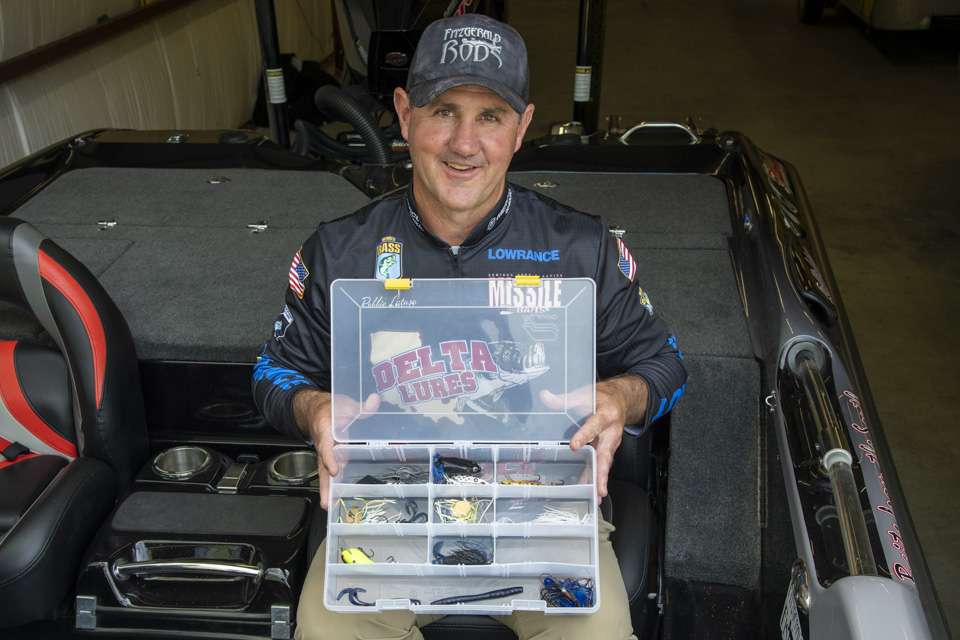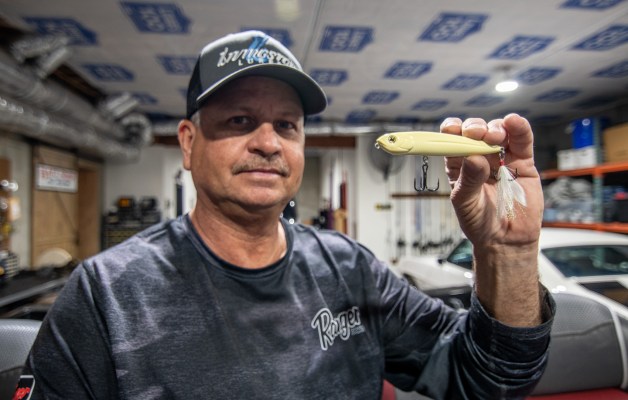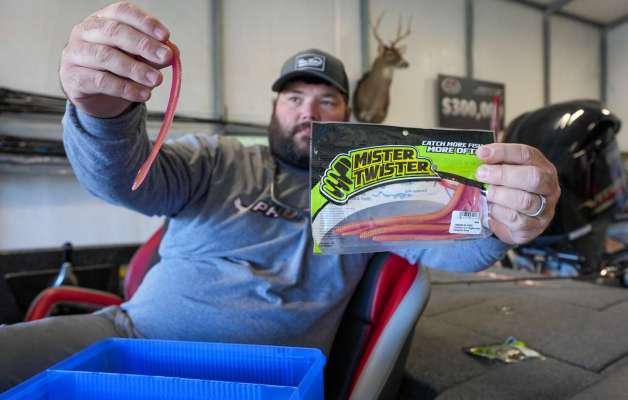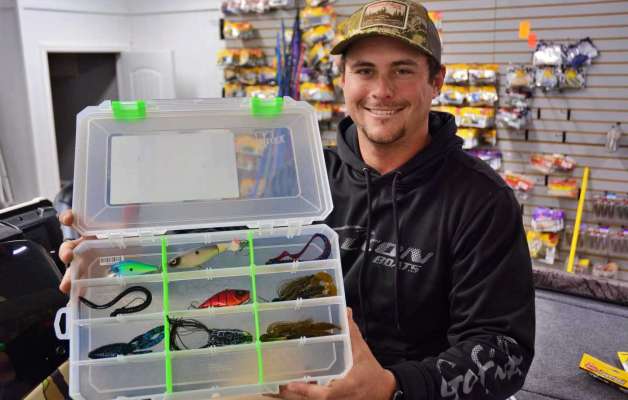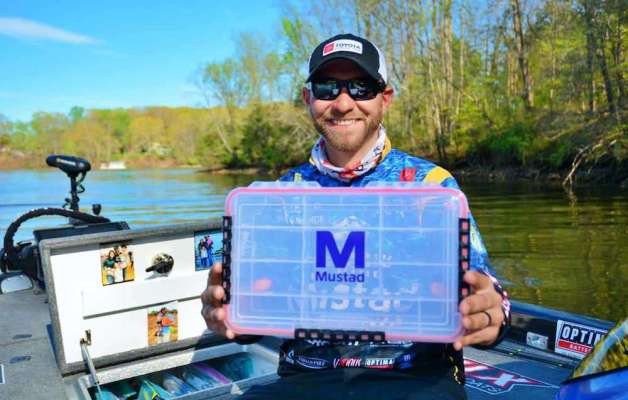
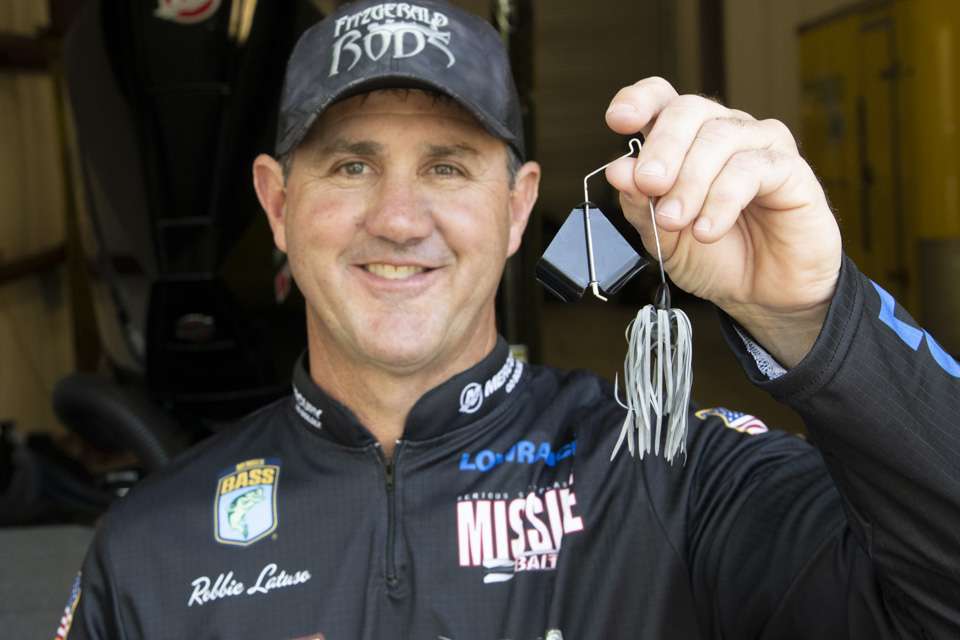
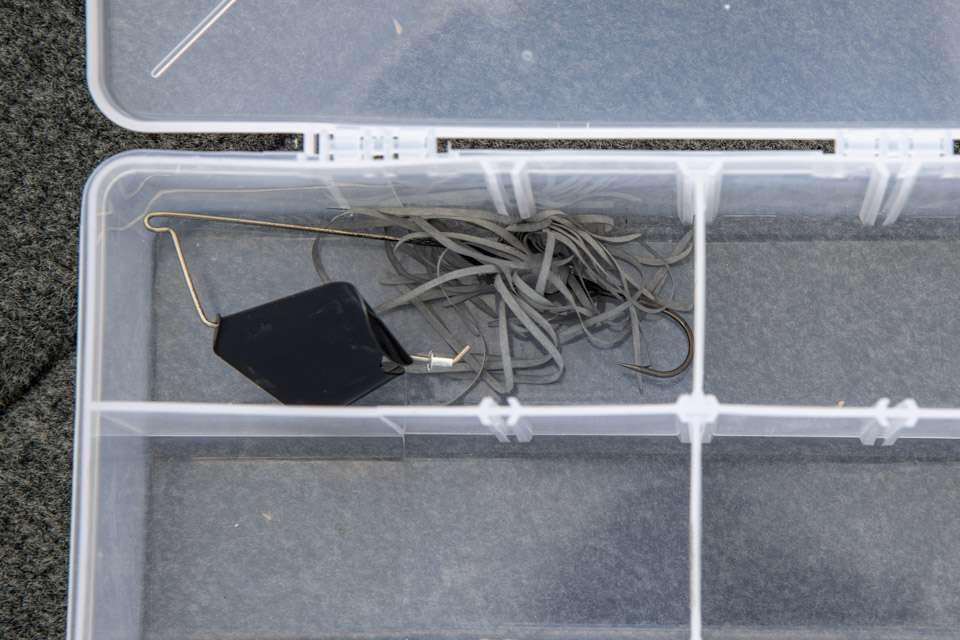
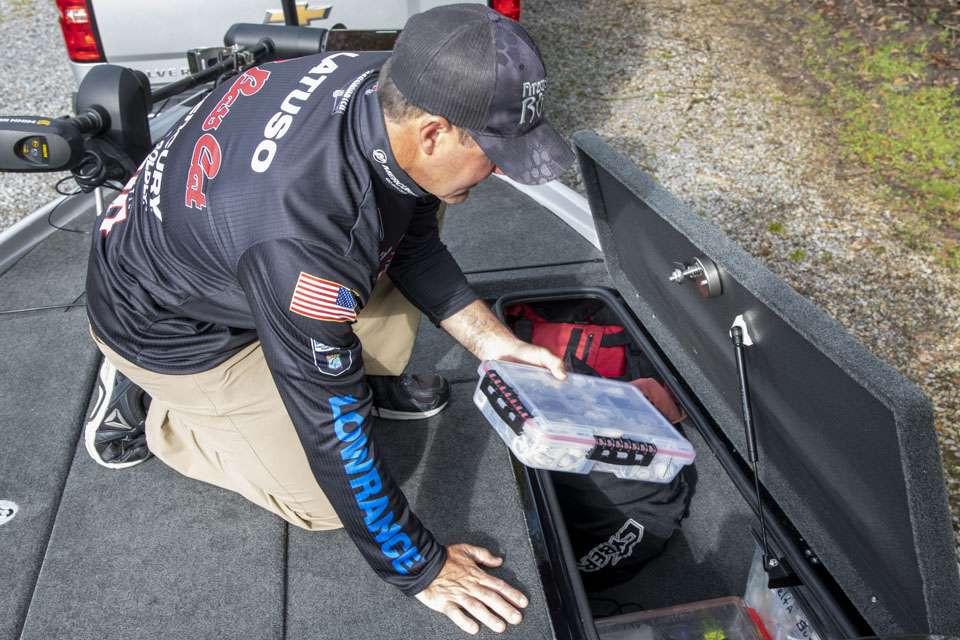
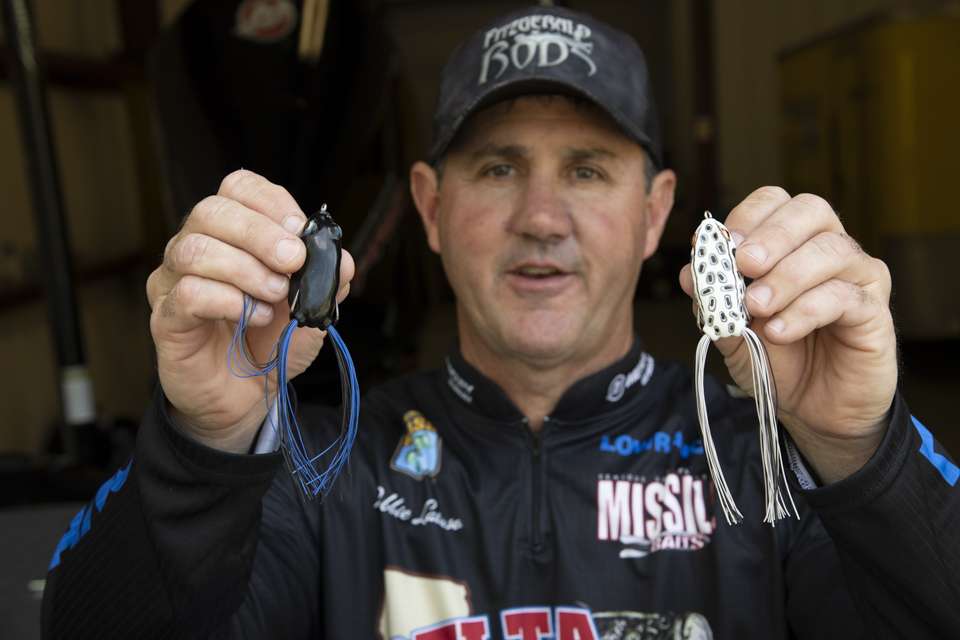


âAnd that gold one is pretty much the only color you need down here.â
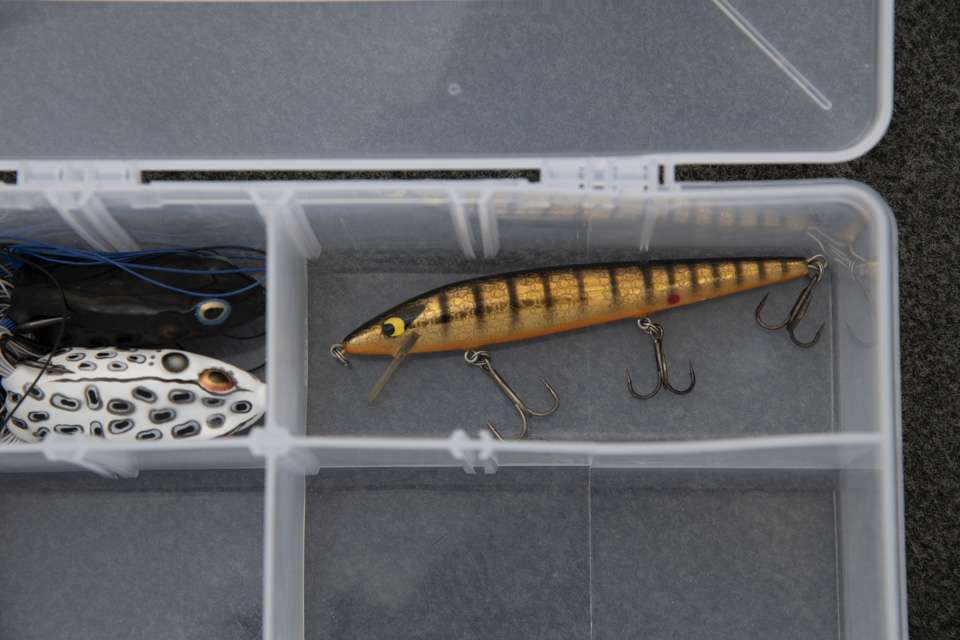







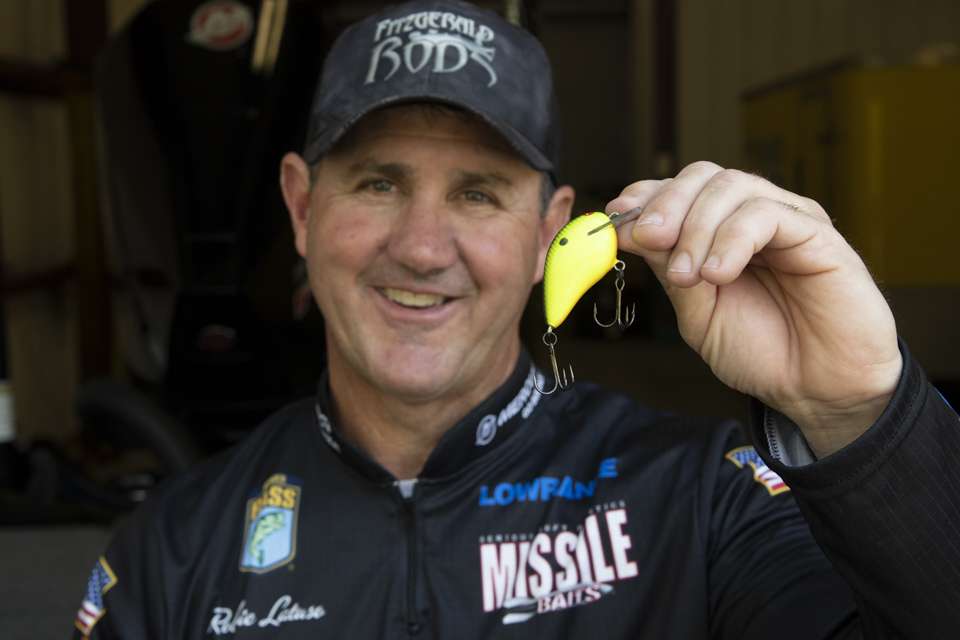


âItâs a good way for a beginner to get a little confidence in a jig. Itâs a hard bait to learn to fish.â
And the black-and-blue combination is âpretty much the only color you need,â he said. âIt works best in stained water, but it has worked anywhere in the country Iâve been to.â
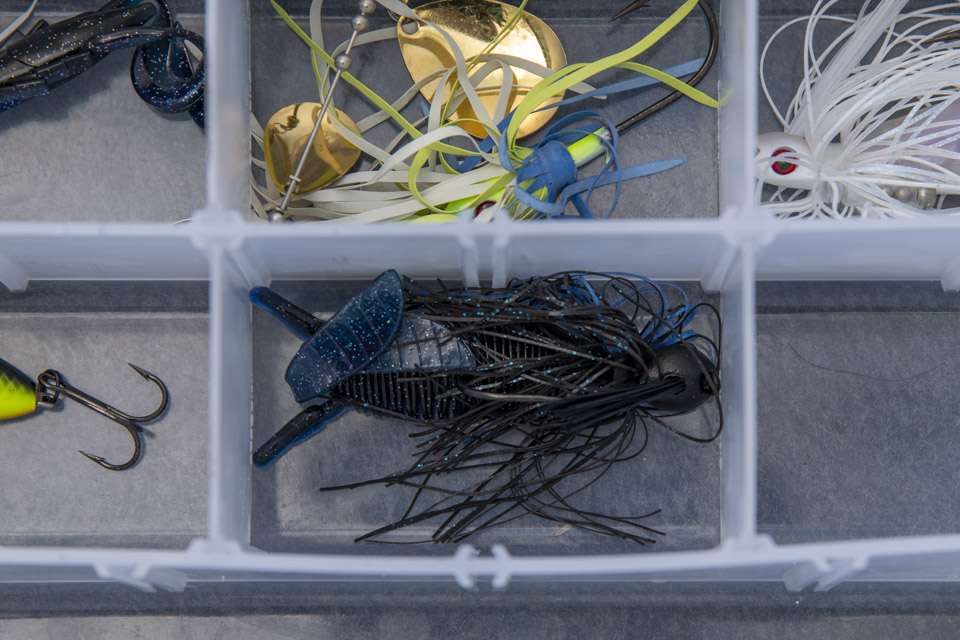


The choice of whether or not to peg the weight comes down to the cover Latuso is fishing.
âIf youâre flipping in grass or a lot of bushes, you want to peg it,â he explained. âIf youâre just flipping around open wood or trees, donât peg it. Youâre going to get more bites and more hookups without pegged weights.â
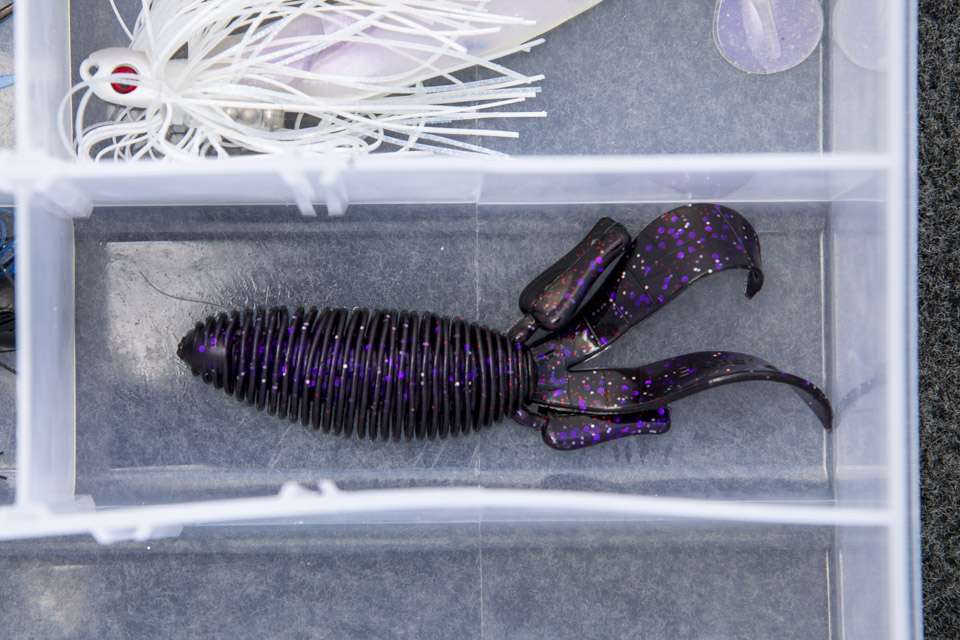

âYou flip it just like you flip the D-Bomb.â


âItâs kind of ‘finessy.’ You just want to get bit as a beginner, and thatâs a great bait to catch fish on. Drag it around real slow, and youâre probably going to catch a fish.â
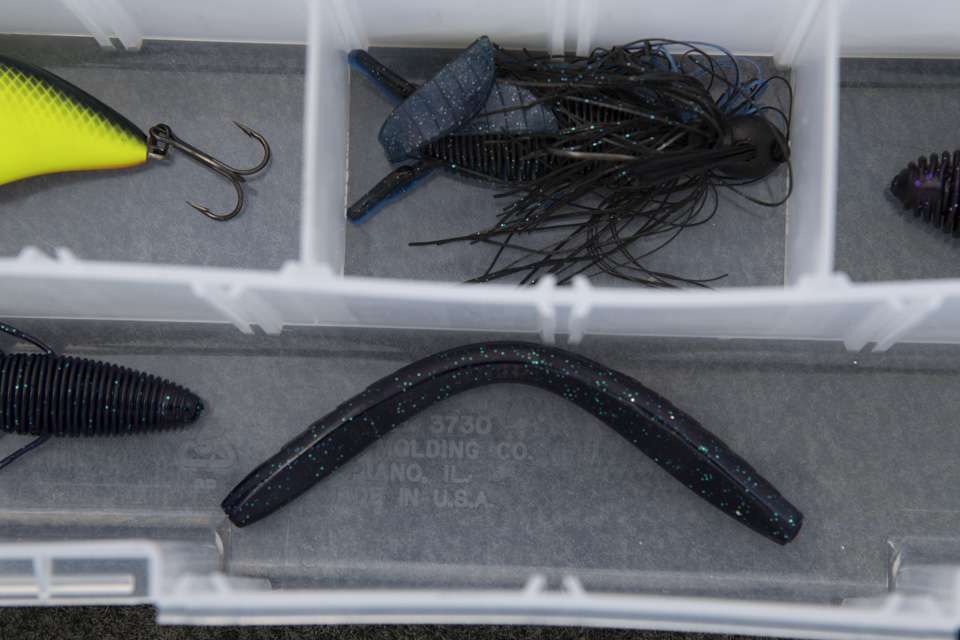
âItâs kind of finessy. You just want to get bit as a beginner, and thatâs a great bait to catch fish on. Drag it around real slow, and youâre probably going to catch a fish.â

He pegs his weight to ensure the lure breaks through the salad. âI use two stoppers,â Latuso said. âOne peg slips on you, but with two it ainât going nowhere.â
The punching skirt helps give some heft to the bait profile. âSometimes they want a bulkier profile, especially earlier in the year around the spawn,â he said. âYou get bigger bites. Sometimes they want something big to eat.â

